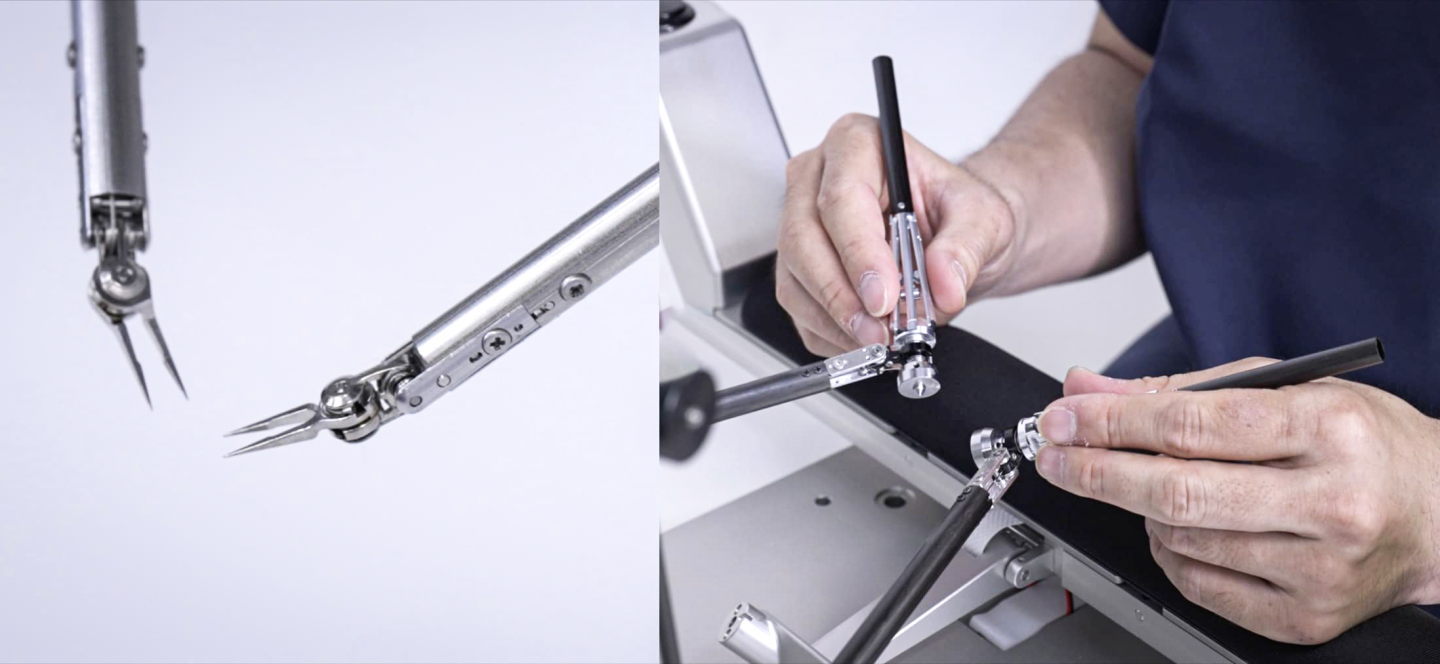Sony has proven off its new surgical robotic doing a little super-precise work stitching up a tiny slit in a corn kernel. It is the primary machine of its sort that auto-switches between its totally different instruments, and has efficiently been examined in animal surgical procedure.
It is designed to assist in the sphere of super-microsurgery, a extremely specialised discipline during which surgeons function on extraordinarily small blood vessels and nerves, with diameters properly underneath 1 mm (0.04 in). As you may think, this type of factor requires extremely regular palms, and specialists on this discipline typically do their work complete trying via a microscope.
Thus, it is a super place for some robotic help, and there are a selection of surgical robots already in scientific use from firms like Intuitive Surgical, Stryker and others. We’re not speaking absolutely autonomous AI-powered robotic surgeons right here, we’re speaking teleoperation instruments that permit surgeons to amplify their imaginative and prescient whereas shrinking their hand motions.
In essence, this will fully take away the prerequisite that super-microsurgeons should be freaks of nature, bodily gifted people with extraordinary management over nice hand and finger co-ordination. A very good surgical robotic would permit a a lot wider vary of individuals to do that infinitesimally tiny work utilizing larger motions and way more wobbly palms.
Microsurgery Help Robotic Stitching a Corn Kernel | Sony Group
Sony’s digicam and TV experience give it a leg up by way of the precision imaging right here; the robotic, at present in prototype kind, is a low-latency distant surgical procedure system during which the surgeon makes use of a pair of squeeze-sensitive, pen-like controllers and watches the real-life results via a tiny, stereoscopic 4K 3D digicam system. This feeds real-time imaginative and prescient via to a pair of OLED screens in what successfully quantities to a strapless, desk-mounted set of VR goggles that the surgeon rests their face in.
The place a few of these gadgets depend on ‘movement scaling’ – the flexibility to scale up and down the scale of a movement to maneuver between coarse and nice actions – Sony says its small, light-weight controls let surgeons do high-precision work like getting a needle right into a tiny blood vessel, whereas additionally dealing with larger actions like pulling threads, while not having to vary scale.

Sony
In the identical method as surgical assistants want to face by and hand instruments to the surgeon on the drop of a hat, this robotic has a singular functionality to auto-switch between a number of devices. On request, it will rapidly transfer a given arm again as much as a bit caddy, and swap instruments, returning to the working web site inside 10 seconds, promising minimal interruption to the work.
Surgeons – at the very least these quoted in Sony’s advertising supplies – seem impressed. “I used to be in a position to function this robotic with the identical sense of dealing with forceps and scissors as in common surgical procedure,” says Dr. Hisako Hara within the video under.
“Distant operations which have delays, or totally different robotic actions from my hand actions, go away a destructive impression,” says Dr. Makoto Mihara. “Nevertheless, this robotic strikes as I need it to. It seems like an assimilation between myself and the robotic, with the robotic shifting like my very own fingertips… I discover this robotic extremely succesful.”
Microsurgery Help Robotic | Specialist’s Voice – Dr. Hisako Hara
The prototype was examined at Achi Medical College (AMU) in February, the place it demonstrated its potential to open up super-microsurgery to non-superhumans. Medical doctors and “medical employees not specialised in microsurgery” had been all in a position to carry out an anastomosis – making a surgical connection between two tubes – on animal blood vessels about 0.6 mm (0.02 in) in diameter.
“It takes months to years of in depth coaching for even expert physicians to grasp this method,” says AMU Professor Munekazu Naito. “On this collaborative research, Sony’s surgical help robotic expertise was examined to evaluate its capability to reinforce the abilities of novice microsurgeons. The outcomes demonstrated distinctive management over the actions of inexperienced physicians, enabling them to carry out intricate and delicate duties with adeptness akin to that of seasoned consultants.”
Sony says it is going to proceed R&D work to enhance the machine and confirm its effectiveness, and finally hopes to “contribute to the development of medication by offering robotic applied sciences.”
Supply: Sony

